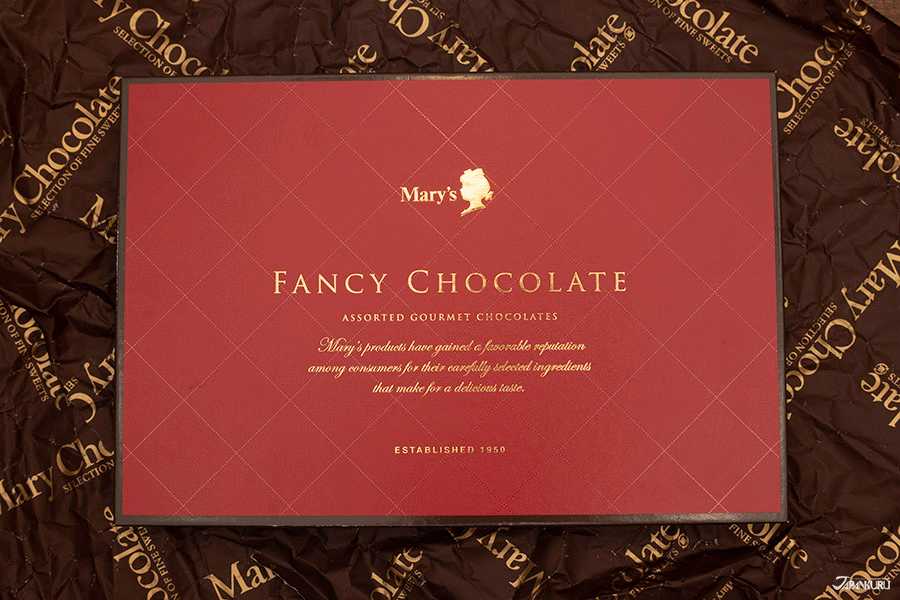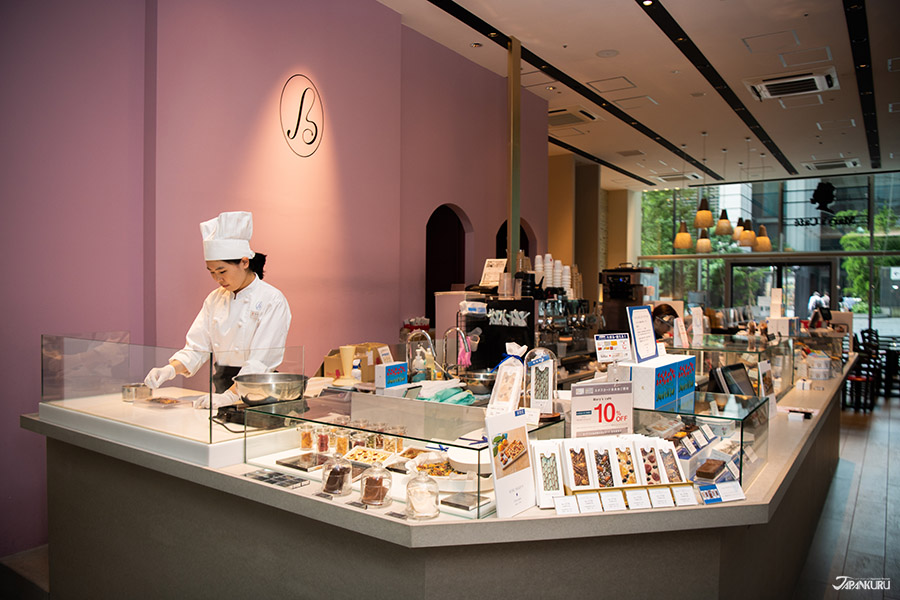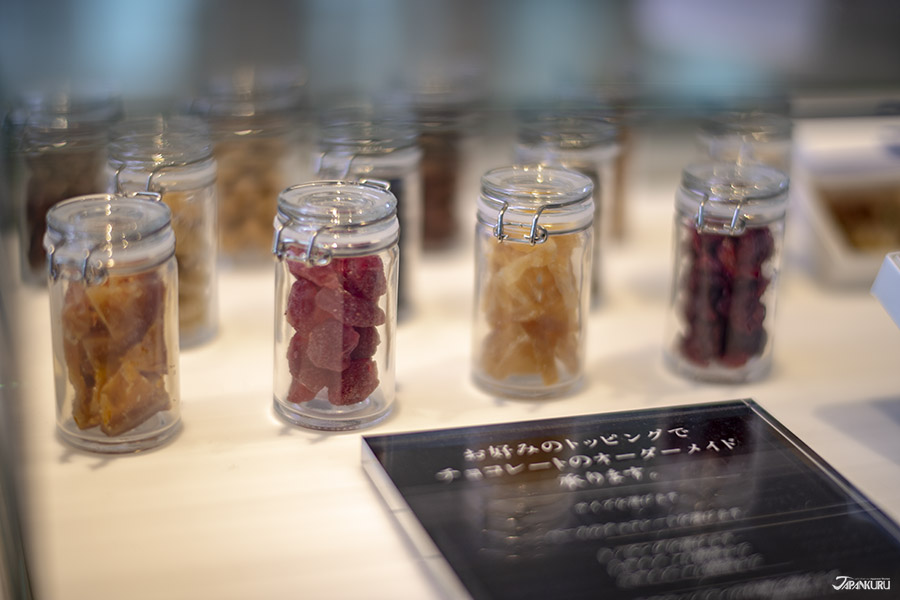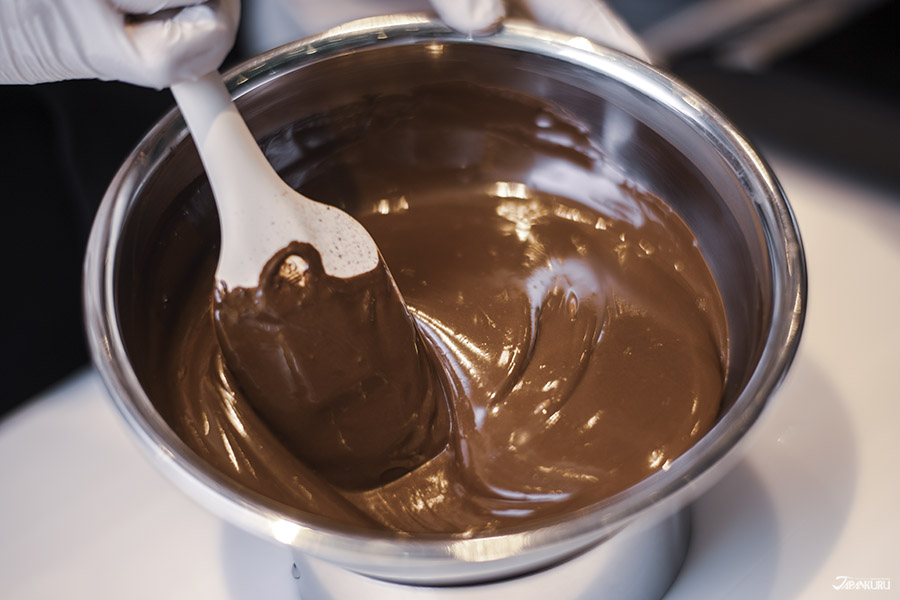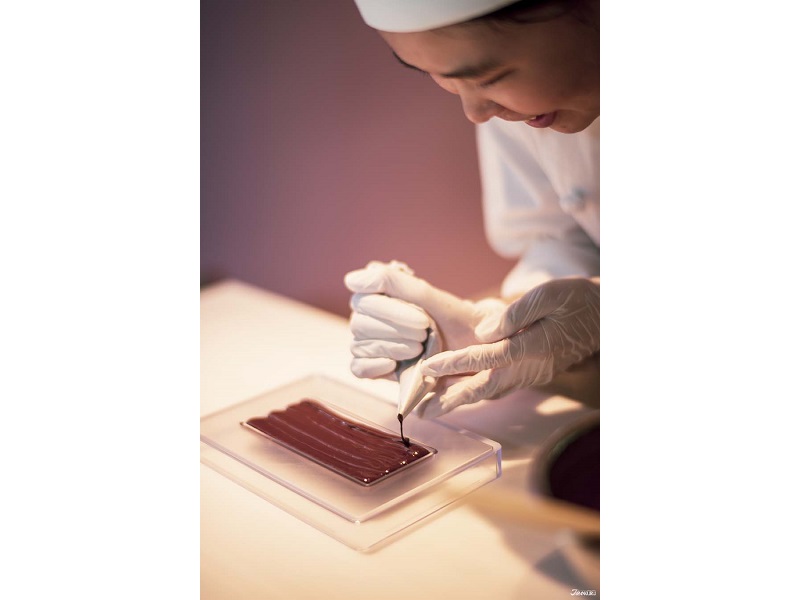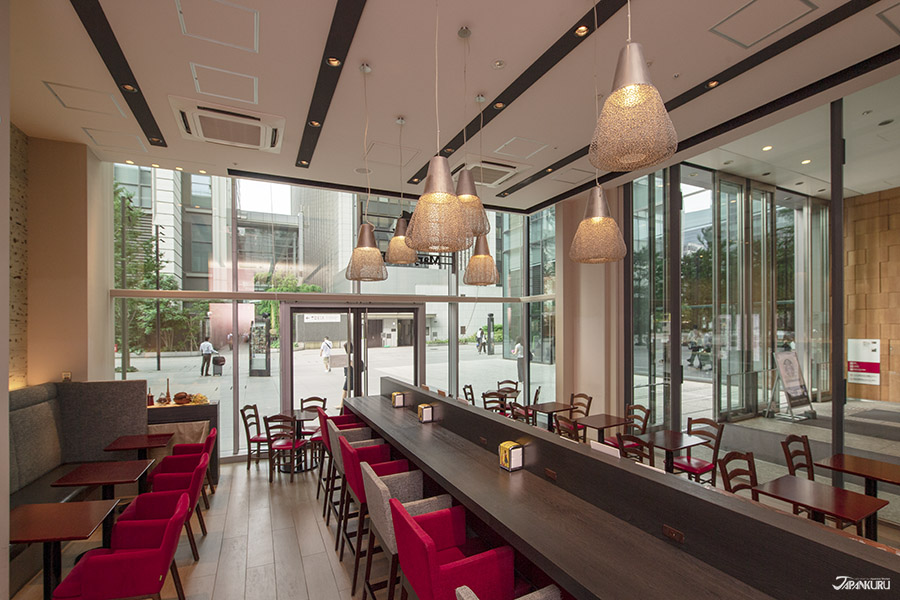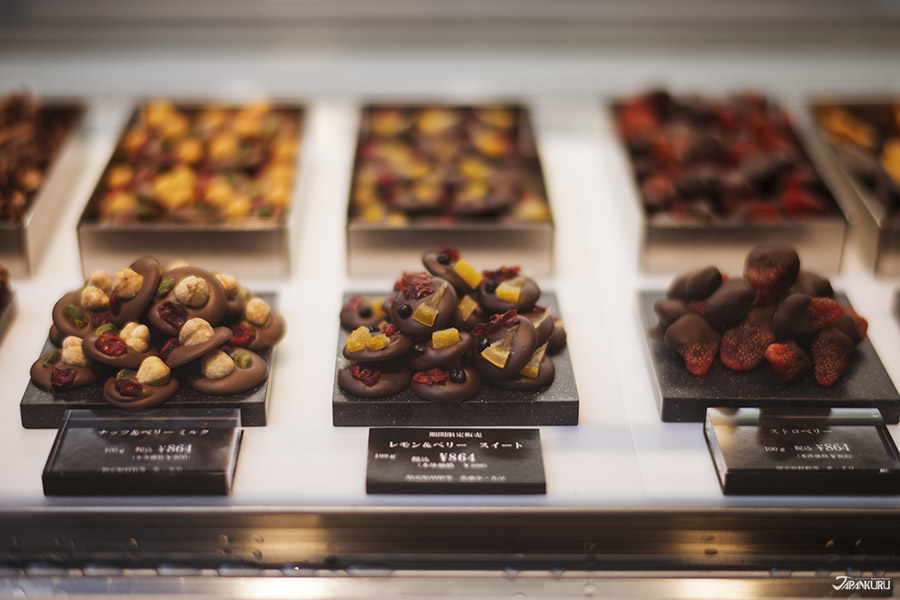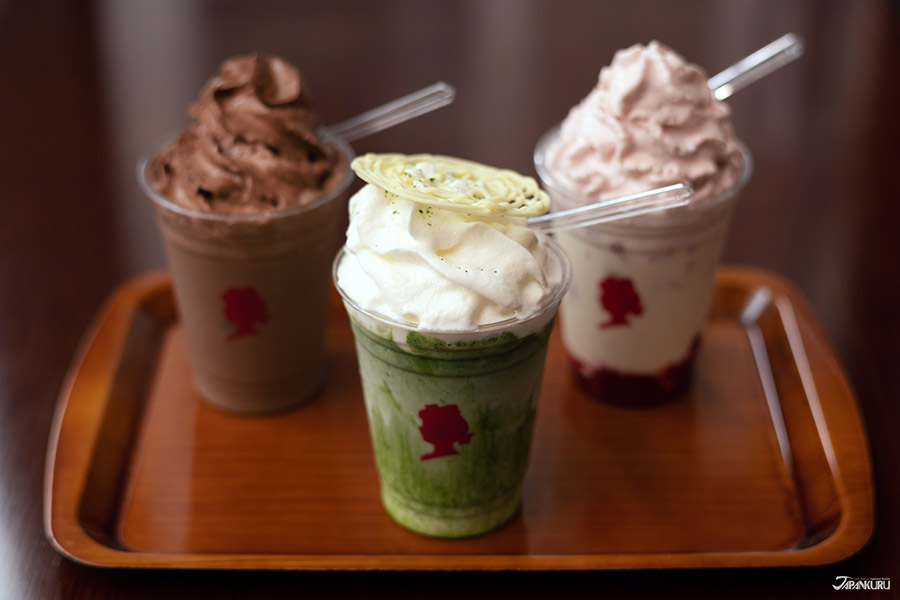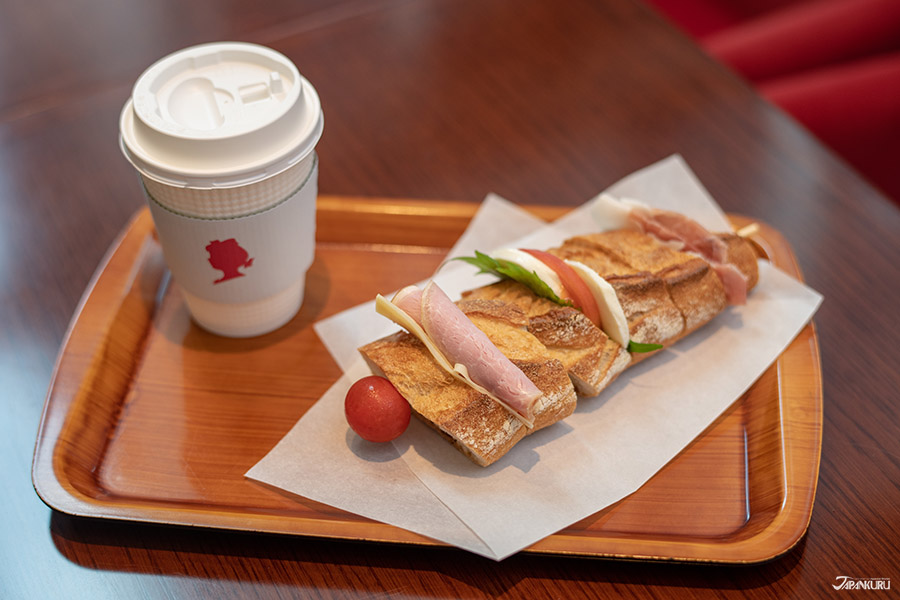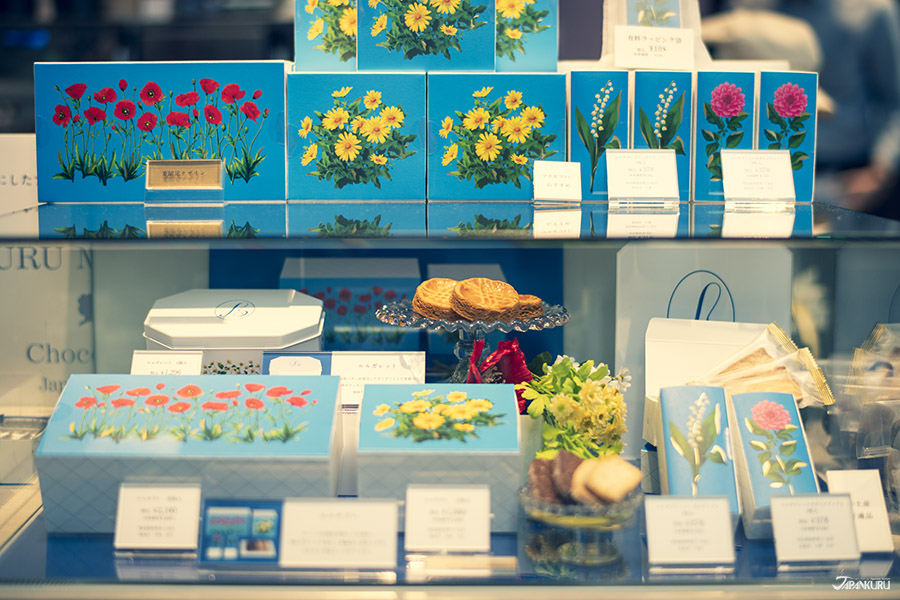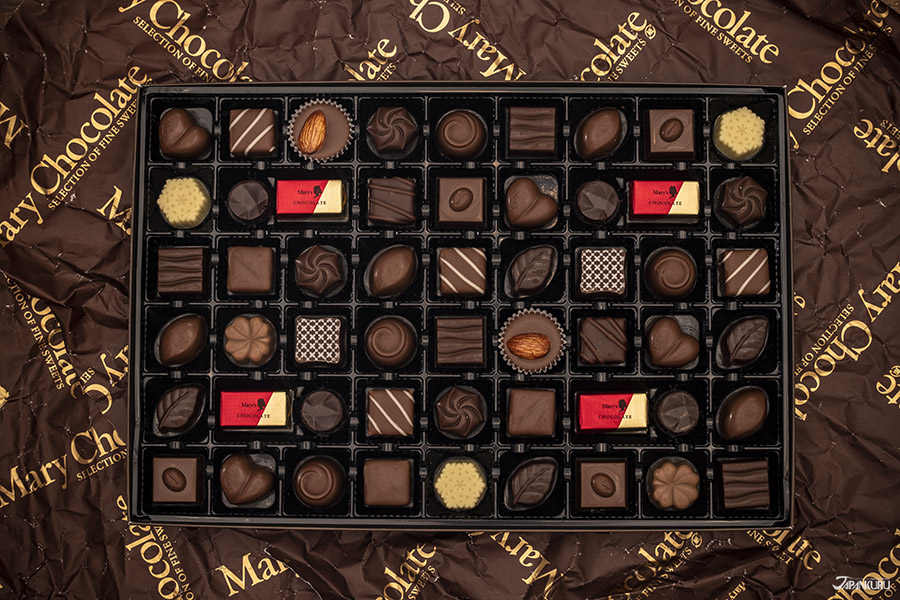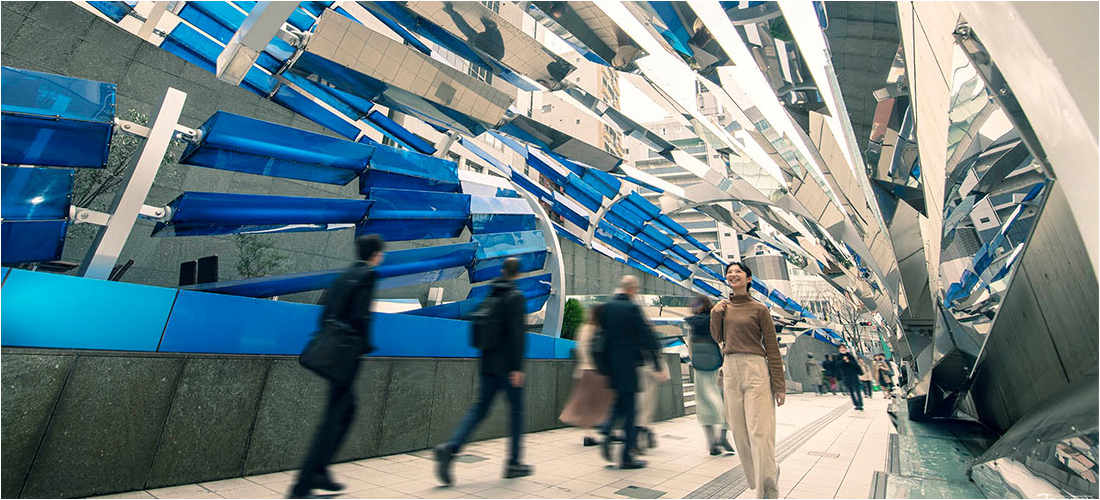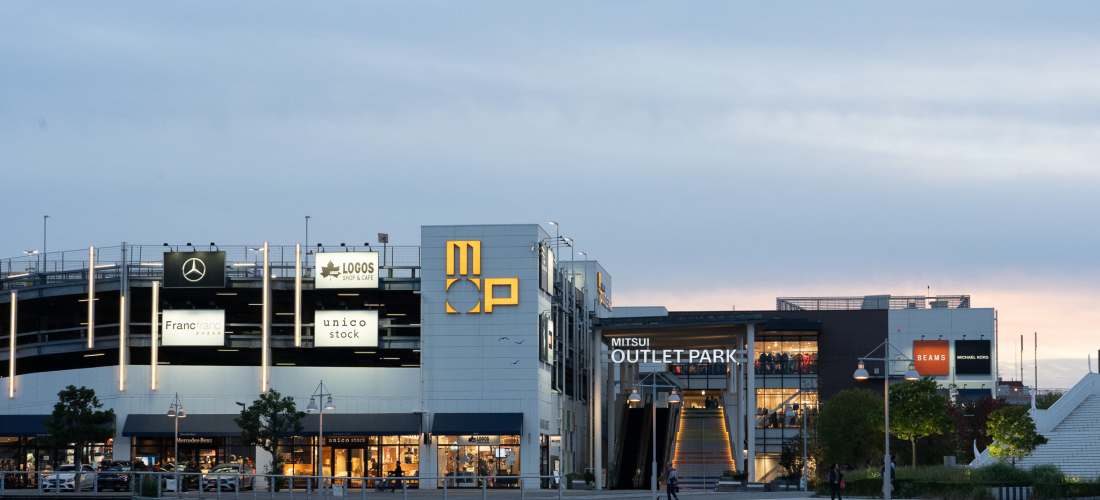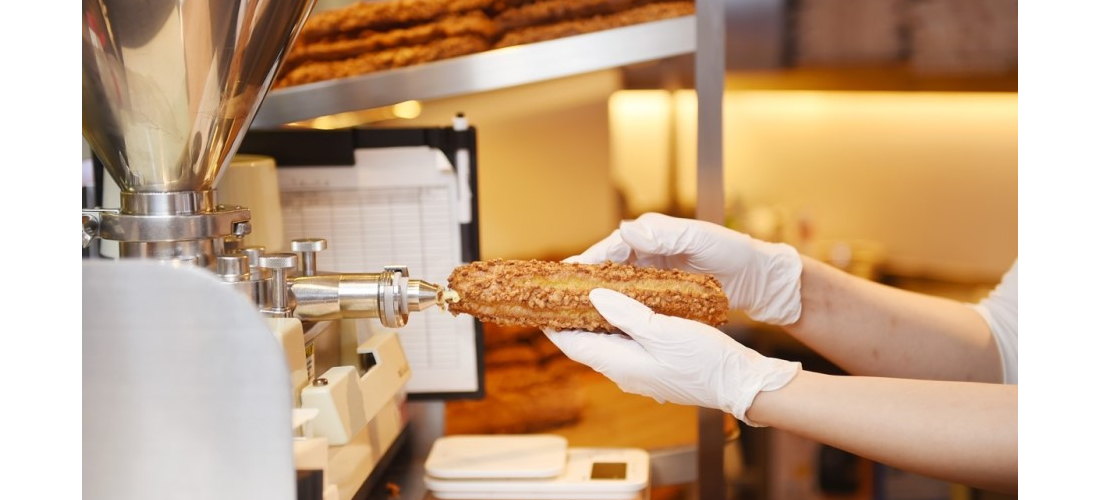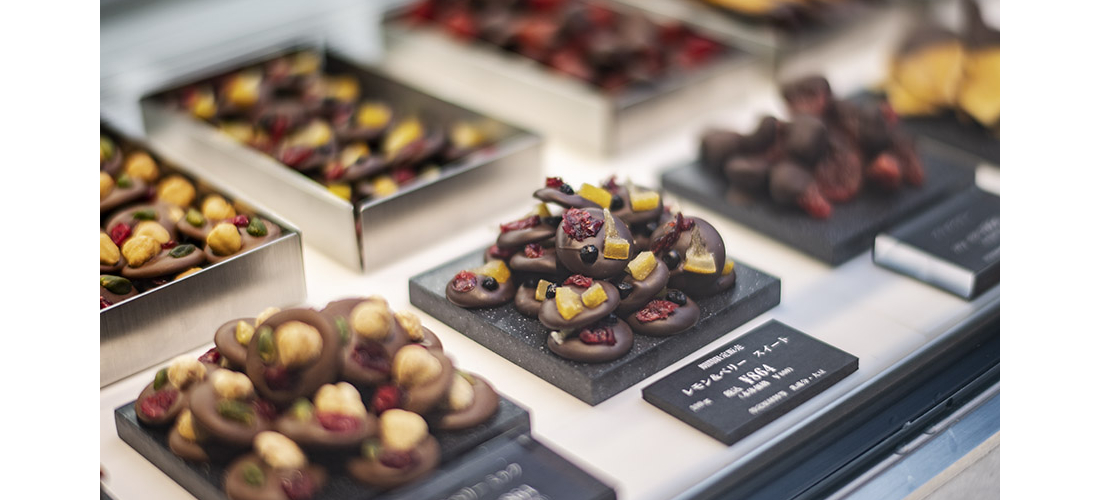
CONTENTS
Mary’s Chocolate has been making gourmet chocolate in Japan for more than half a century, and we can thank them for bringing the Valentine’s Day chocolate-giving tradition to the country (the best part of the holiday)! Plus, just steps out of Tokyo Station, follow your nose and head towards the luscious, sweet scent of chocolate – you’ll find yourself at Mary’s Cafe, where you can make custom chocolate bars and treat yourself while you wait for them to cool. Forget the waxy sweets you find in Japanese convenience stores, we recommend you make your way to Mary’s Cafe (or pick up some Mary’s Chocolate in the airport!) – you won’t regret it.
Mary's Chocolate has been making gourmet chocolate in Japan for more than half a century, and we can thank them for bringing the Valentine's Day chocolate-giving tradition to the country (the best part of the holiday)! Plus, just steps out of Tokyo Station, follow your nose and head towards the luscious, sweet scent of chocolate – you'll find yourself at Mary's Cafe, where you can make custom chocolate bars and treat yourself while you wait for them to cool. Forget the waxy sweets you find in Japanese convenience stores, we recommend you make your way to Mary's Cafe (or pick up some Mary's Chocolate in the airport!) – you won't regret it.
Mary’s Chocolate: Rich in Flavor & History
Mary's Chocolate came into being during a time of great change in Japan, when Western influence was bringing all sorts of things into the country, including new delectable sweets. Calling to mind the happy children already enjoying chocolate treats overseas, the name Mary and the logo featuring a ribbon-wearing girl became forever connected to Japanese chocolate.
The company's aim has always been to make chocolate so beloved that it will leave you with the same feeling as music-lovers calling for an encore. With that goal in mind, in 1950 Kentaro Hara started Mary's Chocolate as a small factory in Tokyo's Meguro area.
When you try some Mary's Chocolate, you're tasting a little piece of history. Far into the 1950s, Valentines Day was an unknown in Japan. Romance was sometimes celebrated in July, during the traditional holiday of Tanabata, but there were no traditions connected to February 14th! That is, until one fateful day in January 1958, when a Mary's Chocolate employee received a postcard from a friend living in Paris. In the short message, that friend happened to mention the French tradition of giving romantic presents, flowers, cards, and chocolate, to a special someone on February 14th. The inspired Mary's Chocolate employee brought this news of romantic Parisian customs to work, and the rest is history!
Of course, in the world of sales nothing goes quite so smoothly, and things took a few years to catch on. When Mary's Chocolate held their first Valentine's Day Fairs at Tokyo department stores that February, 1958, they only sold three bars of chocolate and one card! They made a total of 170 yen.
Image Source: Mary's Chocolate Website
Things have changed in Japan since 1958, and Mary's Chocolate has continued to contribute to the Japanese tradition of women giving men chocolate on Valentine's Day. One intriguing early innovation was large chocolates sold with metal styluses, letting the gift-giver write To and From names right onto the chocolate.
And Mary's Chocolate has never lost its inventive spirit or its connection to the international world of chocolate. In 2000 the company became the first non-European confectionery to enter the Salon du Chocolat, and they've been bringing a little taste of Japan to the competition ever since. The Mary's Chocolate chocolatiers, producing chocolates featuring fragrant yuzu and bitter matcha, have played a part in bringing these unique flavors to the international world of high-grade chocolate. More recently, in 2016, homegrown Mary's chocolatiers working under the label of Tokyo Chocolate even won the CCC Award, reserved for the world's top tier chocolatiers.
A Trip to the Chic Mary’s Chocolate Cafe
Mary's Cafe
1F KITTE Marunouchi, 2-7-2, Marunouchi, Chiyoda-ku, Tokyo
10:00 am ~ 10:00 pm
Official Website
(As we write this, there's just this one shop, a unique little cafe in a city of chains, but Mary's is planning to open one more location all the way over in Kyoto in fall 2019!)
Entering the shop, we found ourselves in a cute pink-walled cafe, with comfortable seating and tendrils of chocolatey aromas filling our noses. (When you visit, keep an eye out for the cool steam-punk looking coffee makers near the entrance!) We asked about the mysterious R-shaped logo on the wall, and were told that it's for "Ruru Mary's." In Japanese, ruru (縷々) means to keep going for a long time, so the logo is meant to represent the long history of Mary's, and its continuation as a line of delicious sweets. The Ruru logo looks a little like an R, and a little like a Japanese "ru" (る)!
We were greeted first thing by the chocolatier working near the front of the cafe, where things are set up for making custom chocolate bars. This custom chocolate is definitely one of the coolest and most unique parts of the cafe, and we thought it would make a great souvenir! (It was hard not buying a few of them as just-for-fun gifts for friends.) Talk to the pro chocolatier and they can help you make the best possible chocolate bar for you, or a special someone, with advice on what kind of chocolate and toppings to choose. They know what flavors will go great together!
Get your custom chocolate bar made with any of their three kinds of chocolate (white, milk, or dark), and then choose what you want on top. There are all kinds of dried fruit, a selection of nuts, and more (plus some seasonal selections). With all the options, it's not an easy decision, which is why we appreciated how you can really talk with the chocolatier. She told us how the candied lemon was a popular summer choice (as it adds a bright pop of tart flavor to the rich chocolate), but that Kiyomi orange was a great option for anyone who wants a uniquely Japanese treat. We went with a few different toppings, and the bitter-sweet Japanese Kiyomi added a unique flavor to our finished bar; it was definitely a good suggestion!
… and taking shape…
While You Wait for Your Custom Chocolate Bar…
Alright, the toppings have been chosen and we're waiting for our custom chocolate bar to cool! Now what?
If you're getting your custom chocolate bar as a gift for someone else, you might find it hard to restrain yourself from trying a bite of the gift. Instead of taking a Charlie Bucket-style nibble from the corner, we'd recommend you just try some of the treats sold at the counter while you wait. Alongside the chocolate-covered dried fruits, you'll see little chocolate rounds that are a lot like the bigger bars sold by Mary's. These little circular chocolates aren't made custom for you, but they are made right there in the cafe (and we can tell you from experience, the toppings are good choices!) These little chocolates are sold by weight, but the display includes a little pile of each item showing you what 100g looks like, making it easy to estimate about how much you want. (We genuinely found that so helpful.)
We couldn't resist a few of their really decadent drinks to sip on while we waited, either. Feast your eyes on: the chocolate mousse drink, Uji matcha white chocolate latte, and a dreamy white chocolate and raspberry mousse concoction. Interestingly enough, the dark chocolate mousse was probably the least sweet option of the three, with a deeply chocolatey flavor and decadent mousse topping. Of course we traded sips, and all three were pretty delectable. And if you're more of a simple hot coffee kind of person, they've got some of that, too.
Surrounded with fragrant chocolate, our stomachs started to rumble, but we figured we should have something with a little more nutrition before our lunches became 100% chocolate. The cafe actually has some nice, light options. Among the sandwiches and soups, we went for the baguette sandwich trio. Look at these delightful little bites, stacked onto a skewer!
And then, well, of course it was time to dig into dessert for real. The cafe isn't limited to chocolate in its bar form, and they had a few different cakes and things to choose from. (Some of these even change seasonally, so let us know if you find anything especially unique and delicious there in the future!)
Chocolate to Bring Home and Share
The custom chocolate has finally cooled, and we're ready to take it back to the office to share! But, since we only made the one bar, we figured we needed some more sweets to share with more people. Mary's Chocolate makes plenty of different products, ranging from their beloved Valentine's boxes and little chocolate with distinctly Japanese decoration, to packaged pastries, so we suspect they have something for everyone. If you don't want to go searching for all their different chocolates at department stores across Japan, there were some delicious souvenir options available right in the cafe.
Don’t Want to Risk Melted Chocolate?
If you have a whole trip ahead of you when you visit the cafe, or you're like us and you go on a swelteringly hot day, you can always find Mary's Chocolate at department stores around Japan before you head home. Or even more conveniently, just grab some at the airport! This particular box is of their Fancy Chocolates, a delectable Valentine's Day staple around Japan.
At the airport you'll definitely find boxes of Silky Soft Chocolate, a unique Mary's Chocolate confection. It comes in a simple chocolate version, with an addictively creamy-soft texture, but also Hokkaido melon flavor. The unique melon chocolate makes a great last-minute souvenir. And if you're not looking forward to a long flight home, you can always treat yourself to some fancy chocolates for the ride.
Nearing 70 years of innovative chocolate making, you know Mary's Chocolate is coming out with some good stuff, so what are you going to try during your cafe visit? After sampling a little of everything, we can happily say that whether you go for a simple custom bar (with a touch of fruity flavor adding color to the creamy chocolate), or a luxe dish of chocolate terrine (complete with ice cream and berries), you're going to leave satisfied.
And be sure to look out for more exciting articles every day at JAPANKURU.
Details
NAME:Mary’s Café
MAP
ACCESS:Tokyo Station
PROFILE
Follow us @Japankuru on Facebook, Instagram, and Twitter!
COMMENT
FEATURED MEDIA
VIEW MORE
Narita Airport Tax-Free Shopping List 나리타공항 면세점 쇼핑 리스트 #pr #calbee #jagapokkuru #japanesesnacks #japanesefood #japanesesouvenir #japantravel #japantrip #naritaairport #hokkaido #나리타국제공항 #나리타공항면세점 #나리타공항면세점과자 #일본공항면세점 #일본기념품쇼핑리스트추천 #공항면세점쇼핑리스트 #일본과자추천 #면세점일본과자 #일본기념품추천 #일본과자 #자가폿쿠루 #일본간식 #일본과자쇼핑 #일본면세점필수템 #일본기념품쇼핑

Asakusa's Sanja Matsuri, one of the biggest festivals in all of Tokyo, is almost here! Make sure you check out the festival route so you don't miss all the festivities this May. #asakusa #sanjafestival #sanjamatsuri #asakusashrine #sensoji #sensojitemple #japanesefestival #shintoshrine #japaneseculture #tokyo #tokyotrip #tokyotravel #asakusasightseeing #matsuri #japantrip #japantravel #springinjapan #tokyotravel #japankuru #산자마츠리 #아사쿠사 #일본마츠리 #일본여행 #일본5월

Odaiba's DiverCity Tokyo Plaza is home to the famous real-size 20m-tall Unicorn Gundam, and the popular shopping center has even more Gundam on the inside! Check out the Gundam Base Tokyo on the 7th floor for shelves upon shelves of Gunpla, and the Gundam Base Tokyo Annex on the 2nd floor for cool anime merchandise. Both shops have tons of limited-edition items! #pr #odaiba #tokyo #tokyotrip #japantrip #japantravel #PR #divercity #divercitytokyoplaza #tokyoshopping #gundam #unicorngundam #gundambasetokyo #anime #otaku #gunpla #japankuru #오다이바 #다이바시티도쿄 #오다이바건담 #건담 #일본건담 #건프라 #건담베이스도쿄

Evangelion, in miniature!? Tokyo's SMALL WORLDS Miniature Museum is actually a must-see for anime lovers, thanks to the tiny Evangelion Hangar and Tokyo-III... plus a whole universe of other scenes both real and fictional. #smallworlds #smallworldstokyo #tokyotrip #tokyotravel #evangelion #eva #anime #miniature #miniatures #animefigure #japantrip #japantravel #에반게리온 #스몰월드 #에반겔리온 #スモールワールズ #오다이바 #아리아케

Have you sat down for a snack at Sumida Aquarium yet? This aquarium next to Tokyo Skytree is known for its penguins and garden eels, but we can't get enough of their cute snacks! There are lots of good seats around the aquarium, too, so it almost feels like one big cafe. 🐧 • Find out more at Japankuru.com! (Link in bio.) • #japankuru #sumidaaquarium #skytree #tokyoskytree #solamachi #sumida #tokyo #tokyotrip #tokyotravel #aquarium #japanesesweets #themecafe #すみだ水族館 #Japan #日本 #일본 #Japon #ญี่ปุ่น #Japão #япония #japantravel #日本旅行 #日本旅遊 #japan_of_insta #japantrip #traveljapan #japan🇯🇵 #igerstokyo #explorejapan

For anime fans, the Evangelion areas at Small Worlds Miniature Museum are a must see! The tiny miniature people in the Evangelion Hangar look like ants beneath the moving Unit-01, Unit-00, and Unit-02! And over in Tokyo-III, characters like Shinji, Rei, and Katsuragi live life on a miniature scale. #odaiba #tokyo #tokyotrip #japantrip #japantravel #ariake #smallworlds #miniaturemuseum #smallworldstokyo #tokyotravel #evangelion #eva #anime #miniature #miniatures #animefigure #japankuru #스몰월드 #에반게리온 #오다이바 #오다이바관광 #오다이바스몰월드 #미니어쳐

